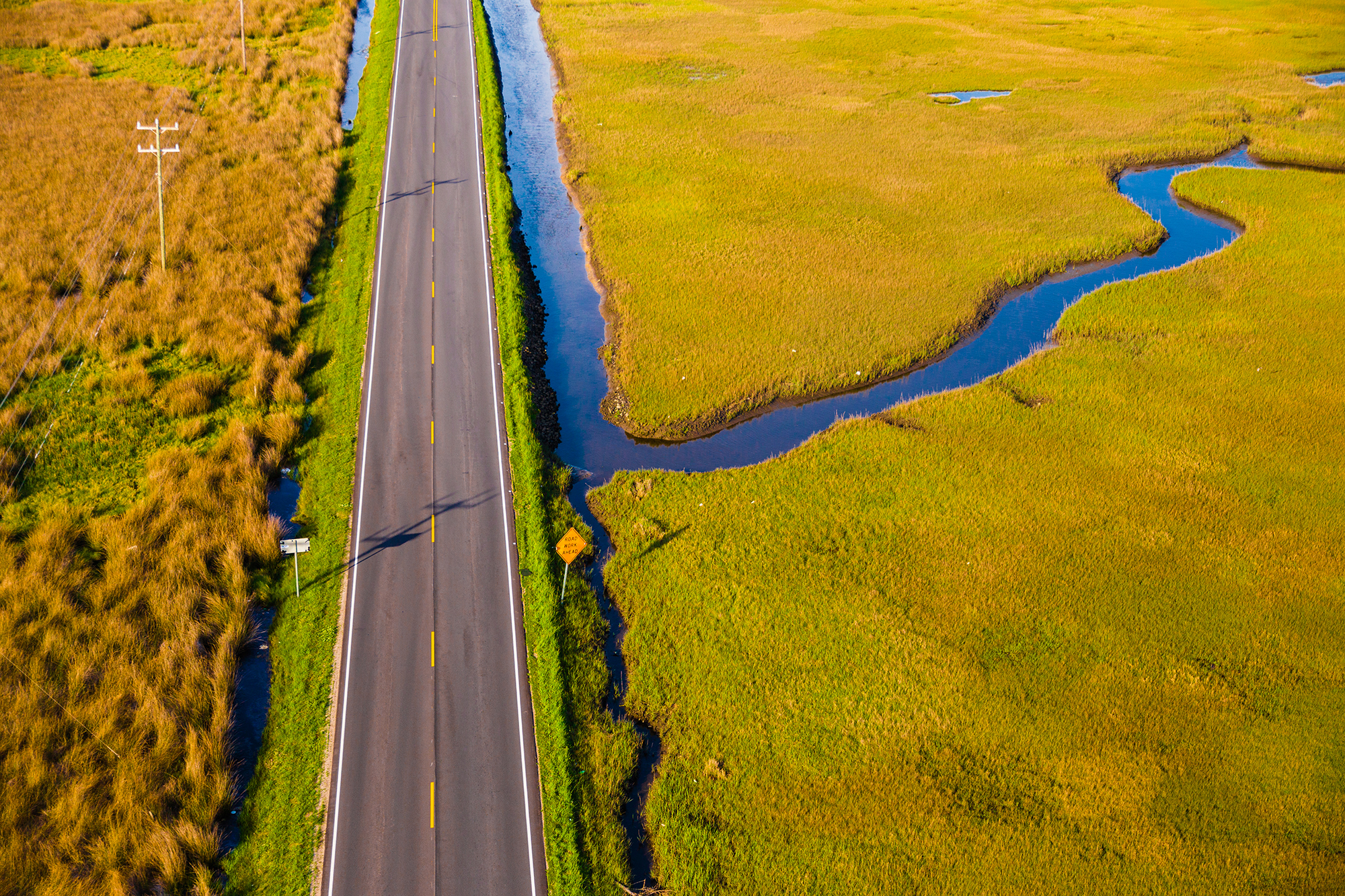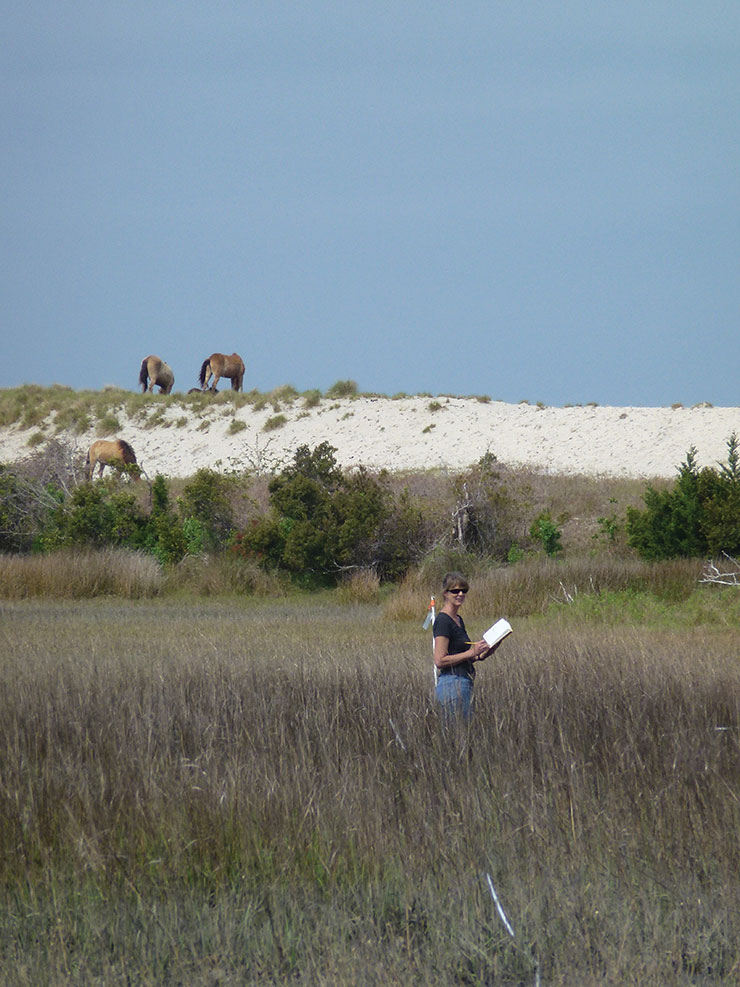PEOPLE AND PLACES: Turning an Eye (and Ear) on Core Sound

There’s a natural rhythm to life in the Core Sound region of Carteret County, an area of vast coastal marshes along North Carolina’s Outer Banks punctuated by small fishing villages. Accessible only by water for much of its history, the tight-knit community has nurtured generations of fishermen and boatbuilders, families of strong traditions and even stronger links to the sea.
“Many of the people who live there have roots that go back to the 1700s,” says Neal Hutcheson, who first visited the area in 2005. “The roads and bridges came through 70 years ago, but even now it’s remote.”
Hutcheson, a producer with the N.C. Language and Life Project at North Carolina State University, found the area by luck rather than design. Vacationing with a friend near Beaufort, he struck up a conversation with some local residents.
“I heard the dialect and it was stunning,” he recalls.
And so, the weekend getaway turned into a seven-year effort to capture the people, language and culture of the region. The result, a new film called Core.Sounders, premiered at the N.C. Museum of History in Raleigh in March. The documentary also will be shown on UNC-TV.
THE EDGE OF THE END
It turns out that Hutcheson found Core Sound just as the area was facing threats to its centuries-old way of life. Real estate development was beginning to encroach on the pristine environment and — worse yet — drive up property values and taxes.
But this was not the only problem.
“The local fishing industry was being challenged on all sides,” Hutcheson explains. “Water pollution was resulting in lower catches and expenses like gasoline were going up. At the same time, prices were depressed by the rise of globalization and the introduction of imported fish from Asia and Latin America.”
If he wanted to capture the region’s rich culture, Hutcheson realized, there was no time to lose.
“They were on the edge of the end,” he says.
But the people of Core Sound got a reprieve, in a backhanded way, when the recession hit in late 2007 and the real estate boom went bust. In the years since, residents have been organizing to protect their coastline as well as their industries. They’ve formed a fishing cooperative to improve access to markets and lobbied local government officials for tighter controls on development.
“They are a fiercely independent people who have learned to work together for their common interest,” Hutcheson says.
WORKING ON THE WATER
During production, the filmmaker worked alone, rising early and spending hours on the water with local fishermen, camera gear in hand, to learn about their lives.
“The way they fish is highly intuitive,” Hutcheson notes. “They have a very nuanced knowledge of the ecosystem and the way it works.”
And except for the time he almost lost his camera into a net hauling up a catch of flounder, it was an enjoyable experience.
“They’re a pretty rough bunch. Most of them are hardworking and hard-playing,” he adds. “But I felt very warmly welcomed by them. They want to get their story out, to share who they are and what their lives mean to them.”
EMBRACING LANGUAGE
Hutcheson won an Emmy for The Last One, a 2008 documentary about mountain man Popcorn Sutton brewing what turned out to be his last batch of moonshine.
In addition, Hutcheson has produced five documentaries for PBS in collaboration with Walt Wolfram, a renowned linguist with NC State’s English department and this film’s executive producer. They are Indian By Birth (2001), Mountain Talk (2004), Voices of North Carolina (2005), The Queen Family: Appalachian Tradition & Back Porch Music (2006), and The Carolina Brogue (2008).
Wolfram, director of the Language and Life Project, says the work is important because of the role language plays in society.
“A lot of people grow up feeling ashamed of their language,” he says. “We want to change those attitudes. You should embrace your language as part of your culture, part of your heritage, part of your experience.”
The work also is important because many of the languages and dialects the project documents are disappearing.
“There’s a feeling of nostalgia in all of us in terms of preservation,” Wolfram points out. “We capture what we can to preserve the legacy and then move on. But we realize that things will never be the same.”
Find out more about Core.Sounders at www.coresounders.com, and about Hutcheson’s other films at www.talkingnc.com. Learn about the N.C. Language and Life Project at www.ncsu.edu/linguistics/ncllp.
Reprinted with permission from NC State’s Bulletin.
AT THE PREMIERE
Neal Hutcheson’s documentary, Core.Sounders, debuted before a packed house in the North Carolina Museum of History in March. A chartered bus brought Core Sound fishermen and their families featured in the film on the three-hour trip from Harkers Island to Raleigh to see the show and participate in a question-and-answer session afterward.
“I’ve always been proud to be from Core Sound,” said Karen Willis Amspacher, executive director of the Core Sound Waterfowl Museum and Heritage Center. “But never any more than tonight.”
A reception featuring shrimp provided by Core Sound Seafood preceded the event.
The large number of requests for tickets prompted an additional screening of the movie later in the week at North Carolina State University.
“We’re absolutely delighted with the attendance,” said Hutcheson after the showing. “With so many people from Down East being here, it just had an incredible feeling.” — R.R.
This article was published in the Spring 2013 issue of Coastwatch.
For contact information and reprint requests, visit ncseagrant.ncsu.edu/coastwatch/contact/.
- Categories:


